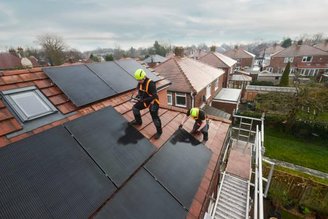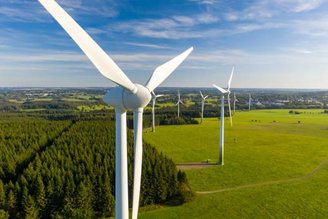Motivated entirely by economic reasons, The first developments in renewable energy began in the 1970s.Arab countries, which are members of the Organization of Petroleum Exporting Countries (OPEC), imposed an embargo on oil exports to the USA and other countries that supported Israel in the Yom Kippur War.
With a barrel of oil costing four times more, consumers were forced to look for other sources, and after a failed attempt to switch to nuclear power, wind and solar power quickly became the most economically viable and popular alternatives to our dependence on fossil fuels. .
In the late 1980s, the first scientific reports pointing to a clear relationship between the burning of fossil fuels and global warming appeared. What was an economic problem eventually became a problem of planetary survival. Wind energy and solar energy once again emerged as clean and renewable alternatives.
Solar energy and wind energy: advantages and challenges
Over the last 50 years, wind energy and solar energy have become the main “green” alternatives to fuels. This means that in addition to producing energy at increasingly affordable costs, they also contribute to protecting the environment, combating global warming and supporting a more balanced and renewable energy system.
These two forces of nature have proven to have the capacity to strengthen the infrastructure and economy of the regions where they are established, while also creating jobs and providing electricity at low operating costs, including in remote areas. But one question still remains: Solar panels and wind turbines remain expensive to manufacture, install and maintain.
Although renewable energy prices are falling rapidly, upfront costs and disruptions remain real economic barriers to the energy transition. To overcome heavily subsidized fossil fuels, it is crucial that we find practical ways to store energy when the sun goes down and the wind doesn’t blow.
Competitive advantages of solar energy

By 2022, the possibility of placing solar panels on rooftops or in the backyards of homes to convert sunlight into energy will increase solar energy like never before.
This decentralization and adaptability gave this alternative a kind of functional portability, bringing energy production closer to the consumer.
Rewiring Australia’s Dr. Saul Griffith talks about this last advantage in an interview with IFLScience: “Rooftop solar is very cheap now. And including a battery that makes it a 24-hour source, you can’t just have the luxury of installing more than you need, but the battery makes it “always on.” “turns it into a source of power.”
Current limitations of wind energy

Wind capacity installation, which grew at around 20% per year until 2010, sort of “froze” between 2010 and 2018. The reasons for this may be related to technical problems and resistance of local people. The noise from the turbines can disturb local residents, although it rarely reaches unhealthy levels.
Competition for larger turbines, another domestic industry factor, may have driven down costs but may also have reached its limit, potentially adding to increased operational risks. Consistently supported by strong fossil fuel advocates.
Ultimately, which of the two systems is most advantageous for the consumer?

When it comes to efficiency, wind turbines stand out not only because they produce energy 24 hours a day, but also because they can convert up to 60% of the energy obtained from wind into usable electricity. The most efficient ones convert only 22% of solar energy into electricity.
However, the problem here is to benefit from wind energy, whereas it is currently much easier to use solar energy.
Although the cost of both has fallen significantly in recent years, according to data published on the website of the International Renewable Energy Agency (IRENA), currently Solar energy is the cheapest and most accessible in different parts of the world. However, he cautions that this is a comprehensive assessment that may vary in some cases based on factors such as geographic location and availability of natural resources.
Follow current developments in science and technology at TecMundo. If you wish, take the opportunity to understand how subscription solar energy works. Until later!
Source: Tec Mundo
I’m Blaine Morgan, an experienced journalist and writer with over 8 years of experience in the tech industry. My expertise lies in writing about technology news and trends, covering everything from cutting-edge gadgets to emerging software developments. I’ve written for several leading publications including Gadget Onus where I am an author.













